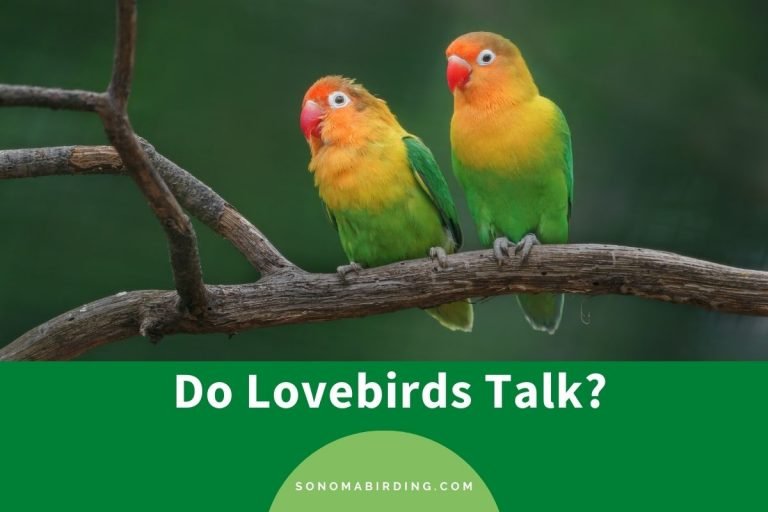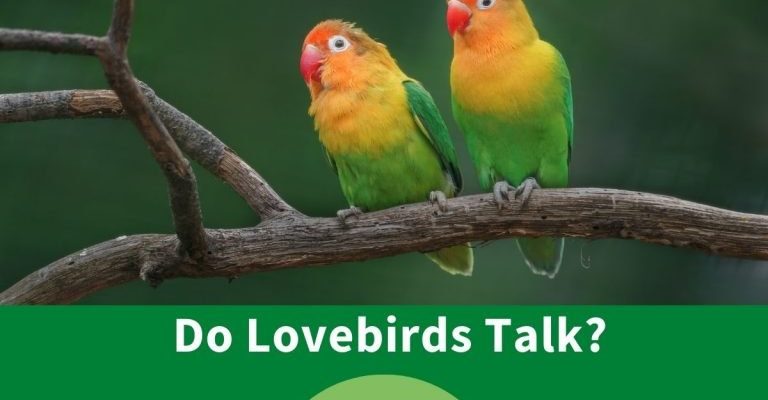
Just like learning a new language, lovebirds need practice and patience. If you’ve ever tried teaching a child to speak, you’ll know it takes time, repetition, and a lot of encouragement. So, let’s dive into this feathery world and explore how these little guys can add some chatter to your life.
Understanding Lovebird Vocalizations
Lovebirds communicate in various ways, not just through talking. They may chirp, whistle, or even click their tongues. Each sound can convey different emotions or needs. For instance, a lovebird may chirp softly when content or make a high-pitched call when excited or seeking attention.
When it comes to vocalization, their sounds are often influenced by their surroundings. If they’re in a noisy environment, they might mimic other sounds they hear. So, if you want your lovebird to mimic a particular phrase, make sure to create a quiet space during training.
Here’s the thing: every lovebird is unique. Some may take to vocalization quickly, while others might be quieter. Factors like age, personality, and social interaction play a big role. If your lovebird is a bit shy, don’t worry; just give them time to settle in and get comfortable with their environment.
Can Lovebirds Learn to Talk?
Lovebirds can learn to mimic words and sounds, but they aren’t natural talkers like some other parrot species. However, with consistent training and encouragement, they can pick up a few phrases. Think of it like teaching a toddler to say their first words.
To help your lovebird learn to talk, choose simple words or phrases that are easy to pronounce. Common choices are “hello,” “goodbye,” or their names. Repeat these words often, especially during playtime or bonding moments. That way, they associate the sounds with fun experiences, making it more likely they’ll try to copy you.
Using a consistent tone helps too. If you say “hello” in a cheerful voice every time, your lovebird might just try to replicate that happy sound. Remember, patience is key. Some lovebirds may take weeks or even months to start vocalizing sounds!
Creating a Talk-Friendly Environment
To encourage your lovebird to vocalize, you need to create an environment that’s both stimulating and comfortable. Start by placing their cage in a lively area of your home where they can see and hear you and your family. Birds are social creatures, and the more they feel connected, the more likely they are to try mimicking sounds.
You might also consider playing music or nature sounds while spending time with your lovebird. This can inspire them to explore their vocal abilities. And if you have another bird, they can learn from each other! Just like a kid picking up slang from their friends, lovebirds can pick up phrases from their feathered companions.
Don’t forget to provide toys and activities that keep them engaged during the day. A bored lovebird might not show much interest in learning to talk. Offering different toys can spark their curiosity and encourage them to express themselves.
Basic Training Techniques for Lovebirds
Training your lovebird is all about consistency and positive reinforcement. Here are some steps to get you started:
- Start Small: Begin with one simple word or phrase. Repeat it often during relaxed moments.
- Use Rewards: When your lovebird makes any attempt to mimic the sound, reward them with a treat or affection. This reinforces their effort and encourages more vocalization.
- Be Patient: Don’t rush the process. Some lovebirds may take longer than others to start vocalizing.
Training sessions should be short and fun, lasting about 5-10 minutes a few times a day. The key is to keep things light-hearted! Just like kids, lovebirds respond best to a playful atmosphere where they feel safe and happy.
Common Challenges in Teaching Lovebirds
While teaching a lovebird to talk can be fun, it’s not without its challenges. One of the main struggles is ensuring that they don’t become stressed. If your lovebird seems hesitant or nervous, step back for a moment. It’s important to create a supportive learning environment.
Another common issue is regression. Your lovebird might pick up a word or two, then suddenly stop vocalizing altogether. This can happen for various reasons, such as changes in their environment or routine. If you notice this, try to identify any changes that might have caused the shift.
Also, keep in mind that not all lovebirds will become great talkers. Some are simply more inclined to express themselves through other means, like play or physical affection. Just enjoy their unique personalities and celebrate their vocal attempts, no matter how small.
Alternatively, Consider Other Forms of Communication
Talking isn’t the only way your lovebird can express their feelings. Lovebirds often communicate through body language, sounds, and interactions. For example, if your lovebird fluffs up their feathers, it usually means they’re content and relaxed.
You might also see them bobbing their heads or flapping their wings, which can indicate excitement or playfulness. Paying attention to these behaviors can deepen your bond and help you understand your bird’s moods better than just focusing on vocalization.
Incorporating varying forms of interaction, like playing games or using toys, can provide a complete communication experience for your lovebird. After all, their chatter is just one piece of the puzzle in building a joyful relationship with them.
Final Thoughts on Lovebird Vocalization
In summary, while lovebirds may not be talkative like some larger parrots, they can learn to mimic words and sounds with the right training and environment. Remember, the journey of teaching your lovebird to talk should be filled with joy, patience, and lots of affection.
Whether they end up saying a few words or simply expressing themselves in other ways, the bond you create will be worth it. So grab your favorite treats, settle in for some quality time, and watch as your little feathered friend starts to explore their vocal potential. Enjoy every chirp and chirp along the way!

